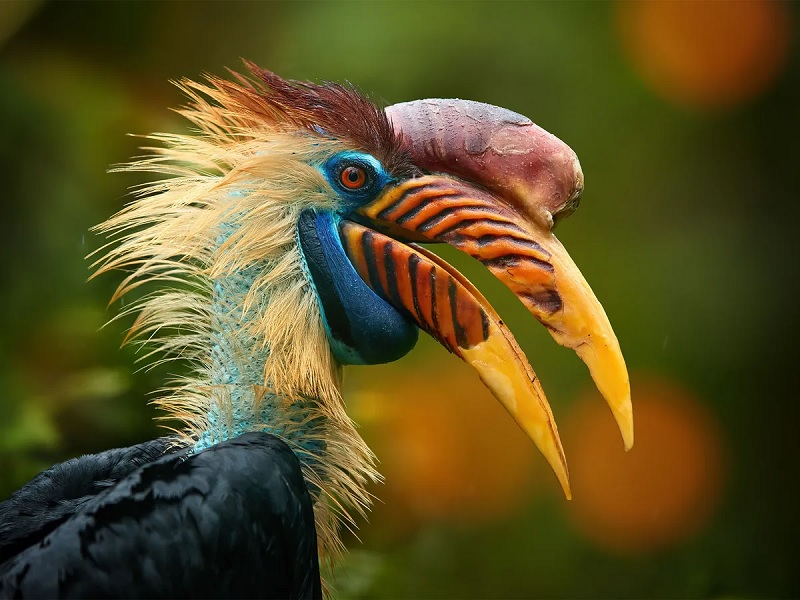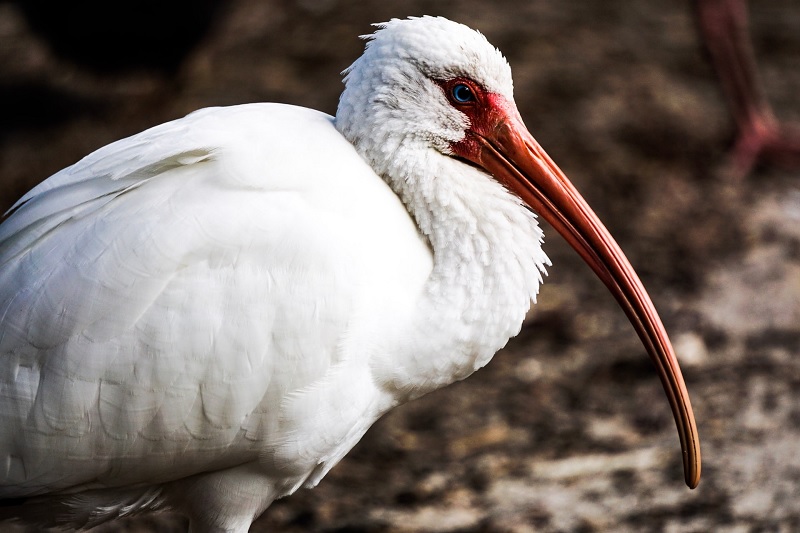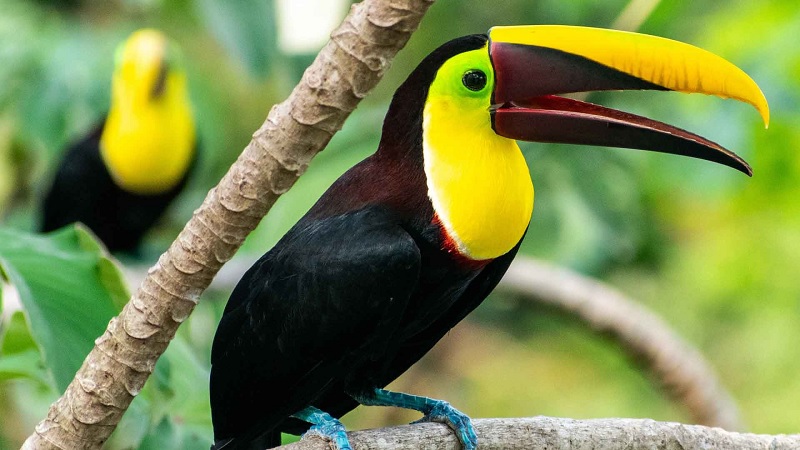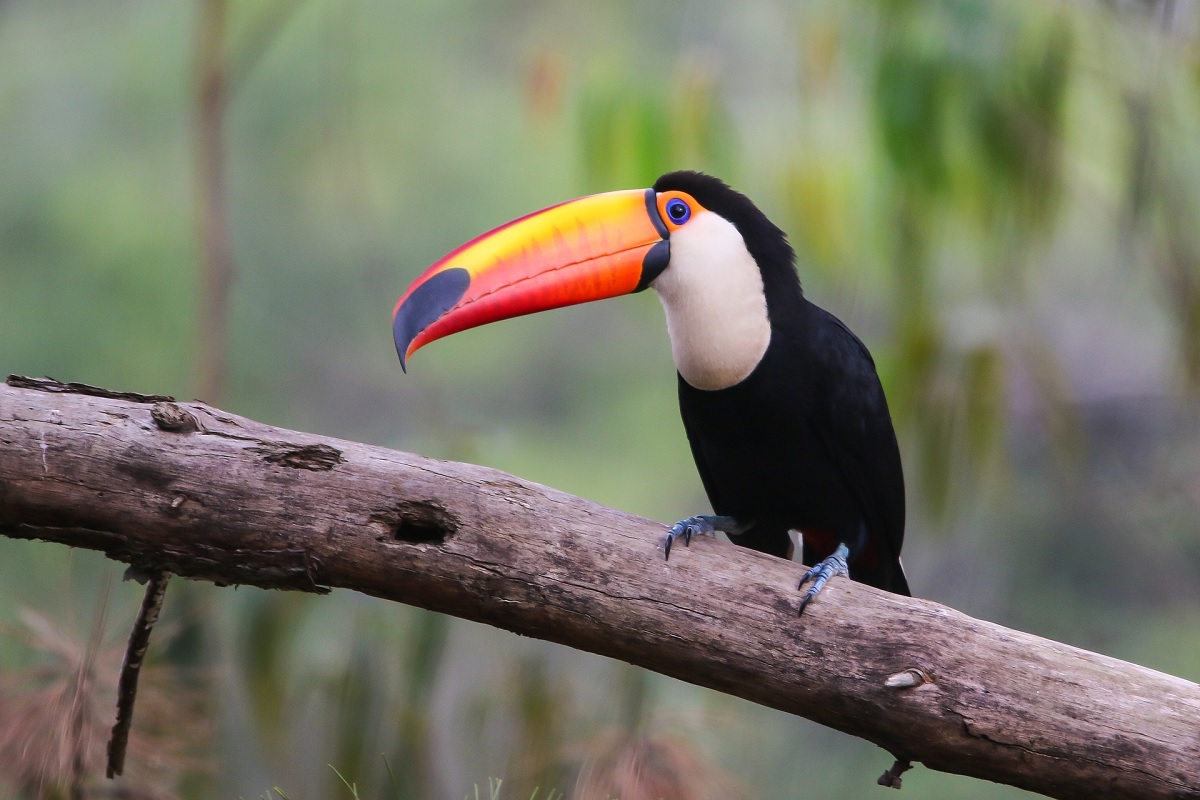Birds display an incredible diversity in feeding habits, behaviors, and ecological roles, and much of this diversity is reflected in their beaks. When studying avian biology, understanding the different structures used for feeding and survival becomes essential. The topic of types of beaks of birds explores the wide variety of shapes and sizes these structures can have, each adapted to specific diets and lifestyles.
From the sharp, hooked beaks of raptors to the long, slender beaks of nectar-feeding hummingbirds, each type serves a distinct function that enhances the bird’s ability to thrive in its environment. Beaks are not only tools for feeding but also play roles in grooming, building nests, and defense. Exploring the types of beaks of birds provides insight into their evolution, ecological adaptations, and the intricate relationship between form and function in the natural world.
General Beak Classifications
Bird beaks vary widely in shape and function, reflecting the diversity of their diets, habitats, and behaviors. General beak classifications help you understand these adaptations, providing a framework for studying avian biology and ecology. Recognizing these categories allows you to connect form with function across different species.

Short and Conical Beaks
Short and conical beaks are commonly found in seed-eating birds such as finches and sparrows. These beaks are stout and strong, designed to crack open seeds and nuts efficiently. The triangular shape allows birds to exert significant force, breaking through hard shells while minimizing effort. Birds with this beak type often rely on precision and strength for foraging, making it an essential adaptation for survival. The simplicity of the shape masks the functional specialization, demonstrating how evolution has optimized feeding structures to suit dietary needs.
Hooked Beaks
Hooked beaks are characteristic of birds of prey, including eagles, hawks, and owls. These beaks feature a sharp, curved tip designed for tearing flesh and accessing meat from prey. The strong upper mandible and hooked tip enable birds to grip and dismember food effectively, complementing their hunting and predatory behavior. This specialized beak supports feeding efficiency and survival in carnivorous species. Observing hooked beaks provides insight into the relationship between predation strategies and anatomical adaptations, highlighting how form evolves to meet ecological demands.
Long and Slender Beaks
Long and slender beaks are common in nectar-feeding birds such as hummingbirds and certain shorebirds. These beaks allow access to deep flowers or narrow crevices, enabling birds to feed efficiently on nectar, insects, or other food sources. The shape supports precision and reach, reducing energy expenditure while foraging. Some species also have slightly curved or specialized tips to assist in extracting food from challenging environments. Understanding long and slender beaks demonstrates how feeding requirements drive the evolution of morphology, linking physical structure with ecological niche.
Flat and Broad Beaks
Flat and broad beaks are typical of waterfowl, including ducks and geese. These beaks often feature lamellae—comb-like structures that help filter food from water, mud, or vegetation. Broad beaks allow birds to scoop and strain efficiently while swimming or foraging in shallow water. This design supports a diet consisting of small aquatic organisms, seeds, and plants. Observing flat and broad beaks illustrates how evolutionary pressures favor functional adaptations that optimize feeding efficiency in specific environments, connecting morphology with behavior and habitat use.
Beaks for Feeding Adaptations
Bird beaks are remarkable tools shaped by evolution to suit specific feeding habits and dietary needs. Different types of beaks provide unique adaptations that allow birds to exploit particular food sources efficiently. Understanding beaks for feeding adaptations highlights the connection between anatomy, behavior, and ecological survival strategies.

Seed-Crushing Beaks
Seed-crushing beaks are short, thick, and strong, perfectly adapted for birds that rely on hard seeds and nuts. Species like finches and grosbeaks use these beaks to crack shells and access nutritious contents inside. The conical shape allows precise force application, making it easier to break tough exteriors without damaging the seed. This adaptation supports survival during seasons when seeds are the primary food source, reducing competition for other food types. The strength and shape of these beaks demonstrate how feeding pressures shape morphology, allowing birds to efficiently exploit abundant but challenging resources.
Nectar-Feeding Beaks
Nectar-feeding beaks, found in hummingbirds and some sunbirds, are long, slender, and often slightly curved. These beaks enable birds to reach deep into tubular flowers to access nectar, a high-energy food source. Their tongues are specialized to lap or suck nectar efficiently. This adaptation allows birds to feed on resources unavailable to species with shorter beaks, reducing competition and supporting survival in specific ecological niches. Nectar-feeding beaks demonstrate co-evolution with flowering plants, highlighting how beak morphology and feeding behavior are tightly linked to ecological interactions and energy acquisition strategies.
Insect-Catching Beaks
Birds that feed primarily on insects often have sharp, pointed, or slightly curved beaks, ideal for capturing and handling small, mobile prey. Warblers, swallows, and flycatchers use these beaks to snatch insects mid-flight or pick them from foliage. Precision and speed are critical, and the slender design aids in manipulating tiny prey effectively. This feeding adaptation allows birds to exploit abundant insect populations while maintaining efficiency and minimizing energy expenditure. Studying insect-catching beaks illustrates how morphology can evolve to meet the demands of foraging strategies, predator-prey dynamics, and dietary specialization.
Filter-Feeding Beaks
Filter-feeding beaks are broad, flat, and often equipped with lamellae, seen in ducks, flamingos, and other aquatic birds. These structures allow birds to scoop water, mud, or sand and strain small organisms, algae, and seeds efficiently. The wide surface area supports effective foraging in aquatic environments, enabling birds to feed while swimming or wading. Filter-feeding beaks demonstrate how adaptations optimize feeding efficiency in specialized habitats, linking beak structure with ecological niche, dietary needs, and survival strategies. This adaptation highlights the interplay between environment, behavior, and physical morphology.
Tearing and Grasping Beaks
Tearing and grasping beaks, typical of raptors like eagles, hawks, and owls, are strong, hooked, and sharp. These beaks allow birds to capture, hold, and tear flesh from prey efficiently. The design supports hunting strategies that require precision, strength, and control, enabling effective feeding on live or freshly killed prey. This adaptation reflects the demands of carnivorous diets, showing how feeding pressures influence anatomical evolution. By examining tearing and grasping beaks, you can understand the direct link between diet, predation techniques, and specialized morphological features in birds.
Specialized Beak Types
Some bird species have evolved highly specialized beaks that allow them to exploit unique food sources and habitats. These specialized beak types reflect precise adaptations to ecological niches, showcasing the intricate relationship between morphology, behavior, and survival. Understanding these beaks reveals the remarkable versatility and evolutionary ingenuity of birds.

Probing Beaks
Probing beaks are long, slender, and often pointed, designed to extract food from soil, mud, or narrow crevices. Birds such as sandpipers, ibises, and curlews use these beaks to locate insects, worms, and small aquatic organisms hidden beneath surfaces. The length and sensitivity of the beak allow them to detect prey by touch or vibration, increasing foraging efficiency. Probing beaks are particularly advantageous in wetland, marsh, and shore habitats, where food is often concealed. This specialized adaptation highlights how birds have evolved morphological tools to exploit otherwise inaccessible resources.
Chiseling Beaks
Chiseling beaks, characteristic of woodpeckers, are strong, pointed, and reinforced to hammer into wood. These beaks allow birds to excavate tree bark to access insects, larvae, or sap. The reinforced structure absorbs impact while maintaining sharpness for drilling into wood. Additionally, the beak works in conjunction with strong neck muscles and shock-absorbing skull features to prevent injury. Chiseling beaks are a prime example of evolutionary specialization, enabling birds to occupy ecological niches that require mechanical extraction of hidden food, demonstrating the connection between form, function, and habitat adaptation.
Spear-Like Beaks
Spear-like beaks, found in herons, storks, and kingfishers, are long, straight, and pointed, perfect for catching fish and other aquatic prey. These birds use rapid stabbing motions to capture moving targets with precision. The sharp tip and streamlined shape reduce water resistance, enhancing hunting success. Spear-like beaks allow birds to feed efficiently in aquatic environments while minimizing energy expenditure. This adaptation illustrates how morphology evolves to support specialized feeding strategies, enabling birds to exploit fast-moving or elusive prey in water habitats successfully.
Crushing Beaks
Crushing beaks are robust, thick, and powerful, commonly seen in parrots, cockatoos, and some finches. These beaks allow birds to crack nuts, seeds, and hard-shelled fruits that other species cannot access. The curved upper mandible works like a lever, providing force and precision for breaking tough exteriors. Crushing beaks also assist in climbing and manipulating objects, showing multifunctionality. These adaptations highlight how specialized beak morphology can support diverse behaviors, including feeding, tool use, and social interaction, allowing birds to exploit unique ecological opportunities.
Scissor-Like Beaks
Scissor-like beaks are adapted for trimming, cutting, or pruning plant material and are seen in species such as flamingos. These beaks have a unique structure that allows birds to filter small organisms from water or remove vegetation efficiently. The upper and lower mandibles work in a coordinated, lateral motion, functioning like a pair of scissors. This specialized adaptation enhances feeding efficiency in watery or marshy habitats and demonstrates the intricate evolutionary modifications birds can develop to maximize resource utilization in specific ecological niches.
Beak Functions Beyond Feeding
Bird beaks serve purposes far beyond obtaining food. They are versatile tools that aid in grooming, nest building, defense, and social interactions. Understanding beak functions beyond feeding highlights the adaptability of birds and the multiple roles this essential anatomical structure plays in survival and daily life.
Grooming and Preening
Birds use their beaks to maintain feather health through grooming and preening. Preening removes dirt, parasites, and loose feathers while aligning feathers for optimal insulation and flight efficiency. Beaks also help in applying oils from the uropygial gland to waterproof feathers. This behavior is essential for hygiene, thermoregulation, and aerodynamic performance. Birds often have specialized beak shapes that facilitate effective preening, demonstrating that beaks are not just feeding tools but integral to overall health and maintenance. Preening ensures birds remain agile, insulated, and protected from parasites and environmental damage.
Nest Building
Beaks are essential tools for constructing nests, manipulating materials like twigs, leaves, mud, and grass. Birds such as weavers, finches, and swallows rely on their beaks’ precision and strength to shape intricate structures that protect eggs and chicks. The versatility of the beak allows birds to gather, weave, and mold nesting materials efficiently. This function highlights the beak’s role in reproductive success, as a well-constructed nest provides safety, warmth, and camouflage for offspring. Observing nest-building behavior illustrates the multifunctional nature of beaks in supporting survival beyond feeding.
Defense and Communication
Beaks also serve as tools for defense and communication. Birds may use their beaks to ward off predators, rivals, or intruders by pecking or displaying aggressive movements. Additionally, beaks are essential in social interactions, such as courtship displays, feeding chicks, and signaling dominance. The versatility of the beak allows birds to interact with their environment and conspecifics effectively. By studying these functions, you can appreciate how beaks contribute to survival, protection, and social structure, showcasing their importance beyond simple food acquisition.
Examples of Birds and Their Beaks
Bird species exhibit an extraordinary range of beak shapes, each adapted to specific feeding habits and environmental needs. Examining examples of birds and their beaks reveals the diversity of form and function in the avian world, showing how evolution has fine-tuned anatomy to suit ecological niches and survival strategies.
Hummingbirds – Long and Slender Beaks
Hummingbirds possess long, slender, and often slightly curved beaks, perfectly designed for accessing nectar deep within tubular flowers. Their beaks work in tandem with specialized tongues that lap up nectar efficiently. This adaptation allows hummingbirds to exploit food sources unavailable to other species while minimizing energy expenditure. The precise design supports hovering and feeding simultaneously, making these birds highly specialized nectar feeders. Observing hummingbirds highlights how beak shape directly reflects feeding strategy, showing the intricate connection between morphology, diet, and ecological role.
Hawks – Hooked Beaks
Hawks have strong, hooked beaks ideal for tearing flesh from prey. The curved upper mandible allows them to grip and dismember food efficiently, supporting their carnivorous lifestyle. This beak type is crucial for hunting and survival, enabling them to process meat quickly. The hook also aids in feeding chicks and defending territory, reflecting multifunctional utility. Studying hawks’ beaks demonstrates how anatomical specialization aligns with dietary needs and predatory behavior, emphasizing the role of form in functional adaptation and ecological success.
Ducks – Broad and Flat Beaks
Ducks feature broad, flat beaks with comb-like lamellae that filter food from water or mud. This design allows them to scoop up aquatic plants, small invertebrates, and other food efficiently. The wide surface area supports both foraging and swimming, optimizing energy use. Ducks’ beaks exemplify how evolutionary pressures in aquatic habitats shape morphology to meet feeding requirements. Their beak structure reflects the balance between environment, diet, and behavior, demonstrating how physical adaptations support ecological niche specialization.
Woodpeckers – Chiseling Beaks
Woodpeckers have strong, pointed, chiseling beaks that enable them to drill into tree bark to access insects and larvae. These beaks are reinforced to withstand repeated impact and work with specialized neck muscles and shock-absorbing skull features. Chiseling beaks illustrate the connection between feeding behavior, habitat, and anatomical specialization, showing how evolution shapes birds to exploit unique ecological niches effectively. Observing woodpeckers provides a clear example of how beak morphology reflects both function and environmental adaptation.
Evolutionary Significance
The evolution of bird beaks represents one of the most remarkable examples of adaptation in the animal kingdom. Beaks have diversified over millions of years to meet specific dietary needs, environmental challenges, and behavioral functions, making them essential tools for survival. Each beak shape, whether long and slender, short and stout, hooked, or flat, reflects the pressures exerted by natural selection and ecological niches. For example, finches on the Galápagos Islands demonstrate how slight variations in beak size and shape can determine access to particular food sources, influencing reproductive success and survival. Over generations, these incremental adaptations accumulate, resulting in the specialized beaks observed today.
Beyond feeding, beaks also contribute to non-dietary behaviors, including nest building, grooming, defense, and communication. Such multifunctionality illustrates the evolutionary advantage of structures that serve multiple purposes. Birds with versatile or highly specialized beaks are better equipped to exploit available resources, avoid competition, and thrive in diverse environments. Studying beak evolution provides insight into how morphology, behavior, and ecology intersect, revealing the dynamic interplay between environmental pressures and anatomical innovation. The evolutionary significance of bird beaks underscores their role not only as feeding tools but also as indicators of adaptive strategies that enhance survival, reproductive success, and ecological diversity across species.
FAQs
ChatGPT said:
What Are the Different Types of Beaks of Birds?
Birds have a variety of beak types adapted to their feeding habits and ecological needs. Common types include short and conical beaks for seed-eating, hooked beaks for tearing flesh, long and slender beaks for nectar feeding, flat and broad beaks for filter feeding, and specialized types like chiseling, probing, and spear-like beaks. Understanding these types helps you identify how each bird interacts with its environment and accesses food.
How Do Beaks Reflect a Bird’s Diet?
Beak shape is closely tied to dietary preferences. Seed-eating birds have strong, conical beaks for cracking shells, while nectar-feeding birds have long, narrow beaks for reaching flowers. Carnivorous birds like hawks have hooked beaks to tear meat, and ducks use flat, broad beaks to filter water for food. By examining a bird’s beak, you can infer what it eats and how it obtains its nutrition.
What Are Hooked Beaks Used For?
Hooked beaks, typical of raptors such as eagles and hawks, are designed for tearing flesh. The sharp, curved tip allows these birds to grip and dismember prey efficiently. Hooked beaks also help in feeding chicks and defending territory, making them versatile tools for carnivorous survival.
Which Birds Have Long and Slender Beaks?
Birds like hummingbirds, sunbirds, and certain shorebirds have long, slender beaks. These beaks allow access to nectar, insects, or small invertebrates hidden in flowers, soil, or crevices. The shape supports precision and efficiency, enabling these birds to exploit resources unavailable to others.
What Are Flat and Broad Beaks Used For?
Flat and broad beaks, found in ducks, geese, and flamingos, are adapted for filtering food from water, mud, or vegetation. The wide surface area helps scoop and strain small organisms, seeds, and plants efficiently, supporting feeding in aquatic habitats.
How Do Chiseling Beaks Function?
Chiseling beaks, seen in woodpeckers, are strong and pointed for drilling into tree bark. These beaks access hidden insects, larvae, or sap while withstanding repeated impact. Chiseling beaks are an excellent example of adaptation to a specific ecological niche and feeding behavior.
Can Beak Shape Affect Bird Behavior?
Yes, beak shape influences not only feeding but also behaviors like nest building, grooming, and defense. For instance, birds with strong, versatile beaks can manipulate objects, construct nests, or preen feathers effectively. Studying beak shape gives you insight into both diet and overall survival strategies.
Final Thoughts
Understanding the diversity of types of beaks of birds reveals the incredible adaptability and evolutionary ingenuity of avian species. Each beak shape, whether short and conical, hooked, long and slender, flat, or specialized, reflects a bird’s feeding habits, ecological niche, and survival strategies. Beaks are not only tools for acquiring food but also serve functions in grooming, nest building, defense, and social interaction, demonstrating their multifunctional importance.
By studying types of beaks of birds, you gain insight into how evolution shapes anatomy to meet environmental challenges and dietary needs. This knowledge highlights the close connection between form and function, showing how morphology influences behavior, ecological interactions, and reproductive success. Appreciating these variations enriches your understanding of birds and the remarkable ways they adapt to thrive in diverse habitats.
